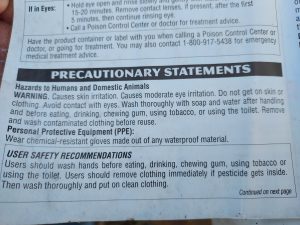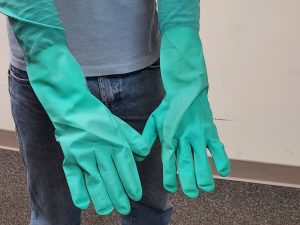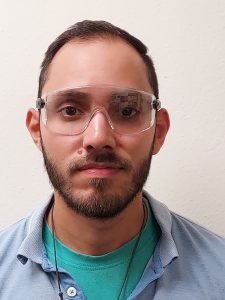Pesticides are a common practice to control pests in agriculture, inside buildings, landscapes, natural areas, and in the Right of Way. At the same time, pesticides are chemicals developed to kill living organisms, meaning we need to use precaution and proper equipment when applying them.

The Pesticide Label is the Law
The pesticide label is the information printed or attached to the pesticide container. The label represents the research, development, and registration procedures that a pesticide must undergo before reaching the consumer at the market. The pesticide label is the law, and applicators must follow its instructions. To the manufacturer, the label is the product’s clearance to sell. To governmental agencies, the label is a way to control the distribution, storage, sale, use, and disposal of the product. To the buyer or applicator, the label should be considered the main source of information on how to use the product correctly, legally, and safely. On the label, you will find information about the minimum Personal Protective Equipment (PPE) needed when applying a specific pesticide. You can always wear more PPE if you wish, but you should never wear less than what is listed on the label.

Routes of Exposure
PPE is important because it protects the pesticide applicator minimizing pesticide exposure. The PPE is designed to avoid pesticide exposure by not allowing the chemical to enter our bodies through one or several of the 4 routes of exposure:
Dermal: Pesticide exposure through the skin. 97% of all pesticide exposure happens through the skin.
Ingestion: Pesticide exposure when someone ingests the chemical. In most cases, this happens because of an accident or carelessness, when applicators do not wash their hands appropriately.
Inhalation: Pesticide exposure when applicators breathe pesticide fumes that are harmful to their health.
Ocular: Pesticide exposure when the pesticide reaches the eyes of the applicator.
The Types of PPE
There are different types of PPE. Depending on the pesticide in use, you must use a specific type of PPE following label

instructions.
Skin protection: The use of long sleeves, long pants, gloves, and overhead protection are usually used to protect our skin and avoid direct contact with pesticides. It is important to know that not all materials are considered PPE. Ordinary shirts, pants, shoes, cotton gloves, cotton caps, and other work clothes are not usually considered PPE. Coveralls and other PPE should be made of sturdy material. Some pesticides required the use of chemical resistance suits, gloves, boots, or overhead protection (non-woven fabrics or chemical resistance equipment). Always read the pesticide label to know what materials are appropriate when handling a specific pesticide.
Eye protection: Eyes are very sensitive to the chemicals in some pesticide formulations. The eyes are also very absorbent, meaning pesticides can be absorbed by the body when reaching the eyes very quickly. The use of goggles, face shields, and protective glasses are examples of PPE for your eyes. Normal-day glasses or prescription glasses are not considered PPE.

Respiratory Tract protection: Respirators protect from breathing pesticide-contaminated air. The label will provide specific instructions if a respirator is required while applying the pesticide. The label will also state the type of respirator required for the specific pesticide. The National Institute of Occupational Safety Health (NIOSH) is the federal agency responsible for testing and certifying respirators in conjunction with pesticides. A fit test is required by law at least once a year to make sure you have a tight-fitting seal with no leakages each time you use the respirator. Even though the fit test is legally required just once per year, it is always good to repeat it several times a year, especially if you have had a significant change in the structure of your face including weight gain, weight loss, or facial hair removal.

Conclusion
PPE is required by law. A pesticide applicator should always follow label instructions and wear the appropriate PPE while handling any activity with a particular pesticide. PPE is designed to minimize pesticide exposure and you must use it to protect your health.
For more information about PPE access the following “ASK IFAS” publications:
“PERSONAL PROTECTIVE EQUIPMENT FOR HANDLING PESTICIDES”
“PESTICIDE SAFETY AND PERSONAL PROTECTIVE EQUIPMENT FOR CITRUS GROVE WORKERS”
University of Florida is an Equal Opportunity Institution
 0
0
